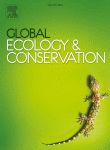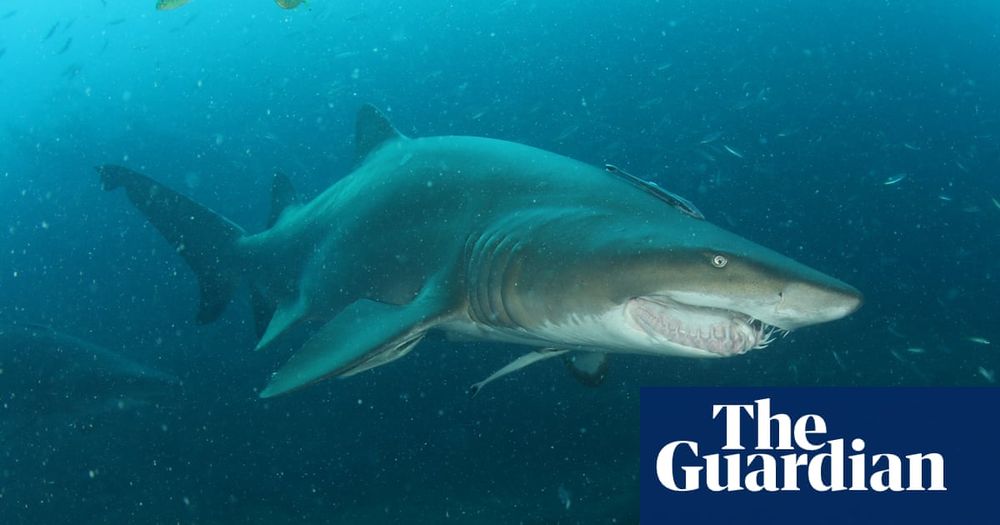Luciana Ferreira
@drlucianaferreira.bsky.social
Research Scientist studying marine megafauna spatial ecology
Our new paper looking at movement and connectivity of predators in remote coral reefs using acoustic telemetry and network analysis link.springer.com/article/10.1... @robharcourt.bsky.social @imos-aus.bsky.social

Marine predator movements create seascape connectivity in remote coral reef ecosystems - Movement Ecology
Background Movement of marine predators can connect different habitats and create links that are key for maintaining metapopulation dynamics, genetic diversity, energy flow and trophic links within and between systems. This key ecological process is known as ecological connectivity. Methods We used a combination of acoustic telemetry data, network analysis (graph theory), habitat modelling and machine learning methods to quantify movement patterns and habitat use of three coral reef predators (grey reef shark Carcharhinus amblyrhynchos, silvertip shark Carcharhinus albimarginatus and red bass Lutjanus bohar). We also assessed how movements and habitat preference influence connectivity in two remote reef systems (Rowley Shoals and Scott Reef) off Northwest Australia. Results Grey reef shark movements created more substantial connections within reef systems, greater than silvertip sharks and red bass, with occasional long-ranging movement linking distant atolls. Core use areas (nodes with high degree centrality) were represented by low complexity habitats in shallow areas near passages in the reef crest, but varied among species, time of the day and sex. Overall, female sharks had larger networks with greater movement extent than males indicating potential sex-specific patterns in movement and connectivity of sharks at both local (within an atoll) and regional (within reef system) spatial scales. Red bass movements resulted in local-scale connectivity between the lagoon and nearby forereef areas, whereas reef shark connectivity operated at broader scales with movement along the forereef creating stronger connections across distant areas within the reef systems. Conclusions The combination of animal tracking data, network analyses and machine learning allowed us to describe complex patterns of movement and habitat use within and between remote coral reef ecosystems and how they influence ecological connectivity over local and regional scales. Importantly, we suggest that the existing spatial protection across these remote coral reefs is effective in protecting the local-scale connectivity of mesopredators, yet broad-scale protection is required to effectively encompass the seascape connectivity of large predators which is crucial for the long-term health and stability of coral reef ecosystems.
link.springer.com
October 13, 2025 at 1:00 AM
Our new paper looking at movement and connectivity of predators in remote coral reefs using acoustic telemetry and network analysis link.springer.com/article/10.1... @robharcourt.bsky.social @imos-aus.bsky.social
Reposted by Luciana Ferreira
Amazing, never seen such a specific calling! Sounds like a dream job!
The Biology Department at CSU Long Beach is now advertising for an Assistant Professor of Elasmobranch Biology. Refer to the attached flyer for details. @uwsafs.bsky.social @uwmarinebiology.bsky.social @misselasmo.bsky.social @whysharksmatter.bsky.social @official-bweems.bsky.social

July 19, 2025 at 8:04 AM
Amazing, never seen such a specific calling! Sounds like a dream job!
Reposted by Luciana Ferreira
Reposted by Luciana Ferreira
New #Shark Pub available #OpenAccess in the journal Diversity and Distributions 📝
Here we show that both natural and artificial seafloor structures influence the movement and habitat connectivity of Whale Sharks across seascapes 🦈
🔗: tinyurl.com/ca9pzycv
🧵(1/4)
@uwaoceans.bsky.social
Here we show that both natural and artificial seafloor structures influence the movement and habitat connectivity of Whale Sharks across seascapes 🦈
🔗: tinyurl.com/ca9pzycv
🧵(1/4)
@uwaoceans.bsky.social

January 20, 2025 at 12:33 AM
New #Shark Pub available #OpenAccess in the journal Diversity and Distributions 📝
Here we show that both natural and artificial seafloor structures influence the movement and habitat connectivity of Whale Sharks across seascapes 🦈
🔗: tinyurl.com/ca9pzycv
🧵(1/4)
@uwaoceans.bsky.social
Here we show that both natural and artificial seafloor structures influence the movement and habitat connectivity of Whale Sharks across seascapes 🦈
🔗: tinyurl.com/ca9pzycv
🧵(1/4)
@uwaoceans.bsky.social
Exciting new paper led by @bendantonio.bsky.social looking at the influence of natural and artificial seafloor features on the movement and connectivity of whale sharks
onlinelibrary.wiley.com/doi/10.1111/...
onlinelibrary.wiley.com/doi/10.1111/...

Natural and Artificial Structures Influence the Movement and Habitat Connectivity of Whale Sharks (Rhincodon typus) Across Seascapes
Aim To understand how natural geomorphological features and oil and gas platforms (OG platforms) influence the habitat use and seascape connectivity of the whale shark (Rhincodon typus). Location ...
onlinelibrary.wiley.com
January 18, 2025 at 1:08 PM
Exciting new paper led by @bendantonio.bsky.social looking at the influence of natural and artificial seafloor features on the movement and connectivity of whale sharks
onlinelibrary.wiley.com/doi/10.1111/...
onlinelibrary.wiley.com/doi/10.1111/...
Our paper just out on pygmy blue whale diving and using dive data to validate foraging areas identified using movement data
www.sciencedirect.com/science/arti...
www.sciencedirect.com/science/arti...

Tracking pygmy blue whale diving behaviour and validation of foraging areas defined from horizontal movement data
Foraging in large vertebrates is often inferred from horizontal movement behaviour from satellite tracking data, but the strength of this inference ha…
www.sciencedirect.com
January 7, 2025 at 2:19 AM
Our paper just out on pygmy blue whale diving and using dive data to validate foraging areas identified using movement data
www.sciencedirect.com/science/arti...
www.sciencedirect.com/science/arti...
Reposted by Luciana Ferreira
🚨🦈 New shark science! 🦈🚨 We observed a sexually mature male whale shark biting the caudal fin of a (likely juvenile) female whale shark. Biting is a pre-copulatory behaviour for many shark species, so this observation provides possible insights into the mating behaviours of this endangered species 🌊
January 3, 2025 at 12:15 PM
🚨🦈 New shark science! 🦈🚨 We observed a sexually mature male whale shark biting the caudal fin of a (likely juvenile) female whale shark. Biting is a pre-copulatory behaviour for many shark species, so this observation provides possible insights into the mating behaviours of this endangered species 🌊


